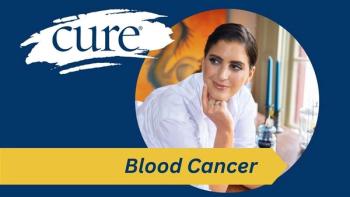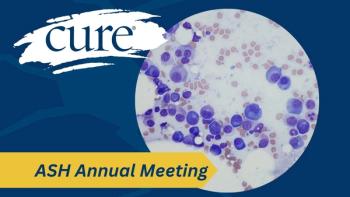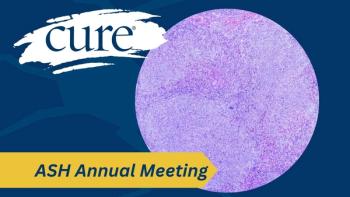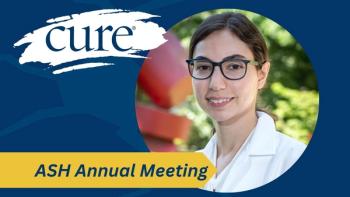
Discussing Long-Term Endocrine Therapy for Patients With Breast Cancer
Amye J. Tevaarwerk, M.D., discusses which patients with ER-positive breast cancer may be good candidates to continue endocrine therapy after five years.
While endocrine therapy is still an integral treatment for patients with estrogen receptor (ER)-positive breast cancer, experts are still questioning which patients would benefit most by staying on the therapy beyond five years.
“The idea [is] that most patients with hormone receptor (HR)-positive breast cancer who are still on endocrine therapy at five years are going to merit some sort of discussion about whether they should continue or not, and it is okay to individualize that decision on the basis of the patient preferences, side effects, and symptom burden,” said Amye J. Tevaarwerk, M.D.
“There are a precious few absolutes in that five-year decision range so […] hopefully we will have additional tools coming up to clarify it for us.”
While experts say the decision should be a personalized one and varies from patient to patient, there are ongoing clinical trials that are further exploring the potential of endocrine therapy and how it bodes well with other efficacious agents in the landscape.
For example, the ongoing phase 3 PALLAS trial is looking at the combination of the CDK 4/6 inhibitor Ibrance (palbociclib) with standard adjuvant endocrine therapy versus adjuvant endocrine therapy alone for patients with HR-positive/HER2-negative disease (
What did you cover in your presentation on ER-positive breast cancer?
What are the questions currently being asked when a patient has reached five years of endocrine therapy?
Are there any data that suggest what patients to pick for extended therapy?
Tevaarwerk, an associate professor of hematology and oncology at the University of Wisconsin, lectured on extending endocrine therapy in ER-positive breast cancer during the 2017 OncLive® State of the Science Summit on Metastatic Breast Cancer. In an interview, she discussed how physicians decide on extending endocrine therapy beyond five years for patients with ER-positive breast cancer, the tools she hopes will soon become available to help clarify this decision, and the clinical research in this population she is eagerly awaiting.In my talk, I focused on extended endocrine therapy and the current state of the art [approach], with regard to what we know currently and what we believe we should do after five years of endocrine therapy in patients with ER-positive breast cancer. How did we get to the prior gold standard, which was to do five years of endocrine therapy and what was it that drove that thinking? It is always very important to consider what that data said. The current data seem to suggest that there may be circumstances for higher-risk individuals where we want to go for five years more [with endocrine therapy] and extend it to 10 years. There are a number of open questions. What patients are at a high-enough risk? What drugs will you use if you go more than five years? Are there really any tools for helping you pick out the patients you should consider doing that for? The current clinical trial data that we have looking at that, unfortunately, is of data and work that were started a long time ago where we may have set things up a little differently versus if we were doing those studies now.
Do you forsee there being further subtyping in the future of breast cancer as a method to better predict response or disease course?
We may have a sense that it may be most appropriate to give it with higher-risk women, but we are largely using this sort of clinical pathologic features that we have always relied upon: the size of the tumor, grade, receptor status and number of positive nodes. These are the ultimate driving factors, at least in my clinical practice. We are not able to say a ton more yet of whether there is a separate predictor. However, we are maybe, kind of, on the cusp of something that we hopefully will have soon. I would like to be able to say that and be very comfortable and confident with such a test. If you look at the history of breast cancer, we are starting to subtype far more. That is good if you want to talk about individualization or tailoring therapy for an individual. It’s not just that you’re HR-positive, but you’re HR-positive with a Ki-67 with the EndoPredict score. It makes looking at the past data that we have much more complex, because we didn’t necessarily have those tools, nor may we able to get them. There was a fine amount of tissue collected on all of those old studies and we kind of hoard them because once we use it up, it’s gone.
Are there quality-of-life issues among patients who are on extended endocrine therapy?
This HR-positive area is just going to become an incredible and complex — maybe even hot — mess. However, we are starting to add in things like Afinitor (everolimus) and Ibrance. I certainly hope those studies are positive because it will give us more tools, but how do we layer that into what we are doing? It is just an incredibly complex area right now, especially when we are trying to figure out who gets adjuvant bisphosphate and who gets adjuvant chemotherapy? We are going to have to get smarter about what we are doing. Looking back on the clinical trials, all of the patients were women who made it to five years of endocrine therapy and then agreed to potentially receive a further five years of it. That is a particular population of women. Therefore, if we are trying to apply this data to our larger population at risk that we are treating in clinic, that clearly is not the woman who we are changing aromatase inhibitor therapy three times in the first year in order to get her to something semitolerable—who is then living in this low-grade misery up until her five-year mark.
Are there any specific clinical trials looking to answer these questions?
What clinical trials are you excited about, overall, in the ER-positive space?
Clearly, there are risks and side effects associated with the endocrine therapies and that is a real consideration to try to sort out who we discuss that with. It tends to be in the more personalized part of it when you are sitting at the five-year mark saying, “What are we going to do now?”In terms of extended therapy, I don’t see a whole lot more being done right now on that. I hope that someone will do a practical trial or some sort of meta-analysis to help us sort through the existing data but, in terms of a new prospective trial, I haven’t heard much rumbling. I am really excited about the SWOG S1207 and PALLAS studies—some of those endocrine therapy plus [other treatment] trials. I’m interested as well to learn about the results of ALTERNATE, which is hopefully two-thirds of the way through its accrual, in terms of giving us another tool to decide who gives what treatment and when. Also, I’m looking forward to the longer term, full results of TAILORx and the SWOG RxPONDER trials.





